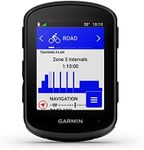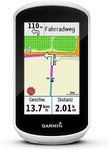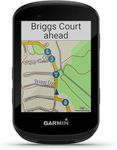Buying Guide for the Best Bike Computers
Choosing the right bike computer can greatly enhance your cycling experience by providing valuable data and insights about your rides. To find the best fit for you, it's important to understand the key specifications and features that bike computers offer. This will help you make an informed decision based on your specific needs and preferences.GPS FunctionalityGPS functionality allows the bike computer to track your location, speed, and distance traveled using satellite signals. This is important for navigation, recording your routes, and analyzing your performance. Basic models may only offer simple tracking, while advanced models provide detailed maps and turn-by-turn directions. If you frequently ride in unfamiliar areas or enjoy exploring new routes, a bike computer with advanced GPS features would be beneficial.
Display Size and TypeThe display size and type determine how easily you can read the information on your bike computer. Larger displays are easier to read, especially while riding, but they may add bulk to your handlebars. Some displays are monochrome, which can be easier to read in bright sunlight, while others are color, offering more detailed visuals. If you have poor eyesight or prefer a more detailed view, opt for a larger, color display. For minimalists or those who prioritize a lightweight setup, a smaller, monochrome display might be sufficient.
Battery LifeBattery life indicates how long the bike computer can operate before needing a recharge. This is crucial for long rides or multi-day trips. Basic models may offer around 10-20 hours of battery life, while high-end models can last up to 40 hours or more. Consider your typical ride duration and frequency. If you often go on long rides or bikepacking trips, choose a model with extended battery life to avoid running out of power mid-ride.
ConnectivityConnectivity features, such as Bluetooth and ANT+, allow the bike computer to pair with other devices like heart rate monitors, power meters, and smartphones. This is important for cyclists who want to track additional metrics or sync their data with apps for further analysis. Basic models may have limited connectivity, while advanced models offer extensive compatibility with various sensors and devices. If you use multiple sensors or like to analyze your data in detail, look for a bike computer with robust connectivity options.
Data Tracking and AnalysisData tracking and analysis capabilities determine the range and depth of metrics the bike computer can record and analyze, such as speed, distance, elevation, heart rate, and power output. This is important for monitoring your performance and progress over time. Basic models may track only essential metrics, while advanced models offer comprehensive data analysis and integration with training platforms. If you are a performance-oriented cyclist or training for an event, choose a model with advanced data tracking and analysis features.
Durability and Weather ResistanceDurability and weather resistance ensure that the bike computer can withstand the rigors of cycling in various conditions. This is important for reliability and longevity. Look for models with robust construction and an IPX rating indicating water and dust resistance. If you frequently ride in harsh weather or on rough terrain, prioritize a bike computer with high durability and weather resistance to ensure it can handle the conditions.
Mounting OptionsMounting options refer to how the bike computer attaches to your bike. This is important for ensuring a secure and convenient placement. Some models come with multiple mounting options, such as handlebar or stem mounts, while others may have more limited choices. Consider your bike setup and personal preference for where you want the computer to be positioned. Choose a model that offers the mounting flexibility you need for your ideal setup.















